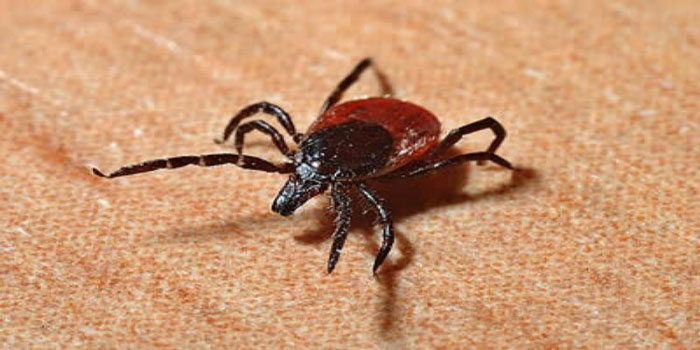Viruses and bacteria can be passed from human to human and animal to animal via a tick's bite. Throughout the United States, ticks can be found in wooded, brushy, and grassy areas feeding on unsuspecting hosts. Tick activity generally peaks in the spring and summer, but ticks can be a problem anytime the temperature is above freezing. Tick-borne Diseases come in wide varieties, and some are more likely to carry certain diseases than others. In addition to Lyme disease and Rocky Mountain spotted fever, ticks can also transmit anaplasmosis, babesiosis, ehrlichiosis, and tularemia. As a result, it is crucial to take precautions against tick bites and be aware of the symptoms of these diseases, as they can be very serious or even fatal if not treated quickly.
The Most Common Tick-Borne Diseases
Lyme Disease:
Borrelia burgdorferi, a bacterium transmitted by ticks, is responsible for the development of Lyme disease. Blacklegged ticks, also known as deer ticks, are the vectors that carry this disease to humans. Lyme disease can cause fever, weakness, muscle, joint pain, and a bull's-eye rash where the tick bit. The infection can spread to the joints, the heart, and the nervous system if not treated. Although the majority of cases of Lyme disease are found in the northeastern and north-central United States, the disease has been documented in other regions of the country and the world.
Rocky Mountain Spotted Fever:
The bacterium Rickettsia rickettsii causes Rocky Mountain spotted fever, transmitted to humans by ticks. The disease is spread to humans through the bites of infected American dogs and Rocky Mountain wood ticks. Fever, headache, muscle pain, and a rash that begins at the wrists and ankles and spreads to the rest of the body are all possible symptoms of Rocky Mountain spotted fever. The disease can be very dangerous or even fatal if not treated. There have been reports of Rocky Mountain spotted fever outside the southeastern and south-central United States.
Anaplasmosis:
The bacterium Anaplasma phagocytophilum is responsible for anaplasmosis, transmitted by ticks. Blacklegged ticks and western black-legged ticks are the vectors for this disease. The flu-like symptoms of anaplasmosis can include a high temperature, a headache, muscle pain, and chills. There is a risk of serious complications or death if the disease is not treated. Although most cases of anaplasmosis are found in the northeastern and north-central United States, the disease has been documented in other regions of the country and the world.
Babesiosis:

The tick-borne parasite Babesia causes the disease known as babesiosis. Infected black-legged ticks can spread the disease to humans through a bite. Babesiosis symptoms include high body temperature, chills, extreme tiredness, and aching muscles. For those with weakened immune systems or who are getting on in years, this disease can be fatal if left untreated. Although babesiosis is most prevalent in the northern and northeastern parts of the United States, it has been documented in other parts of the country and the world.
Ehrlichiosis:
Ehrlichiosis is an infectious disease spread by ticks and caused by the bacterium Ehrlichia chaffeensis. Infected lone star ticks are the vector for this disease. Ehrlichiosis can cause high body temperature, headache, muscle pain, and exhaustion. There is a risk of serious complications or death if the condition is not treated. Ehrlichiosis is most prevalent in the south and southeast of the United States but has been documented elsewhere.
Tularemia:
Francisella tularensis is the causative agent of tularemia. Tick bites, touching infected animals or their tissues, and breathing in bacteria are all ways that this disease can spread to humans. Tularemia patients may experience various symptoms, including high body temperature, chills, weakness, and aches and pains. There is a risk of serious complications or death if the disease is not treated. Although tularemia has been documented in every state in the US, it is most prevalent in the SW and W.
Prevention Of Tick-Borne Diseases

There are several things you can do to protect yourself from tick bites and the diseases they can transmit:
- Ticks thrive in humid, wooded, and grassy environments, so avoiding them is best.
- When venturing into tick-infested areas, it is essential to dress appropriately by donning prolonged sleeves, pants, and shoes.
- Protect your skin and clothes with insect repellents containing DEET, picaridin, or oil of lemon eucalyptus.
- If you've been in tick-infested areas, you should check your clothes and skin for ticks.
- Any ticks you find should be removed immediately. To remove a tick, get as close to the skin as possible with fine-tipped tweezers and squeeze.
Conclusion
Because they can lead to life-threatening human illnesses, tick-borne diseases are a significant public health concern. Prevention of tick bites and recognition of the signs of these illnesses is crucial for prompt medical attention. See a doctor if a tick has bitten you or if you start experiencing symptoms that could be related to a tick-borne illness.




